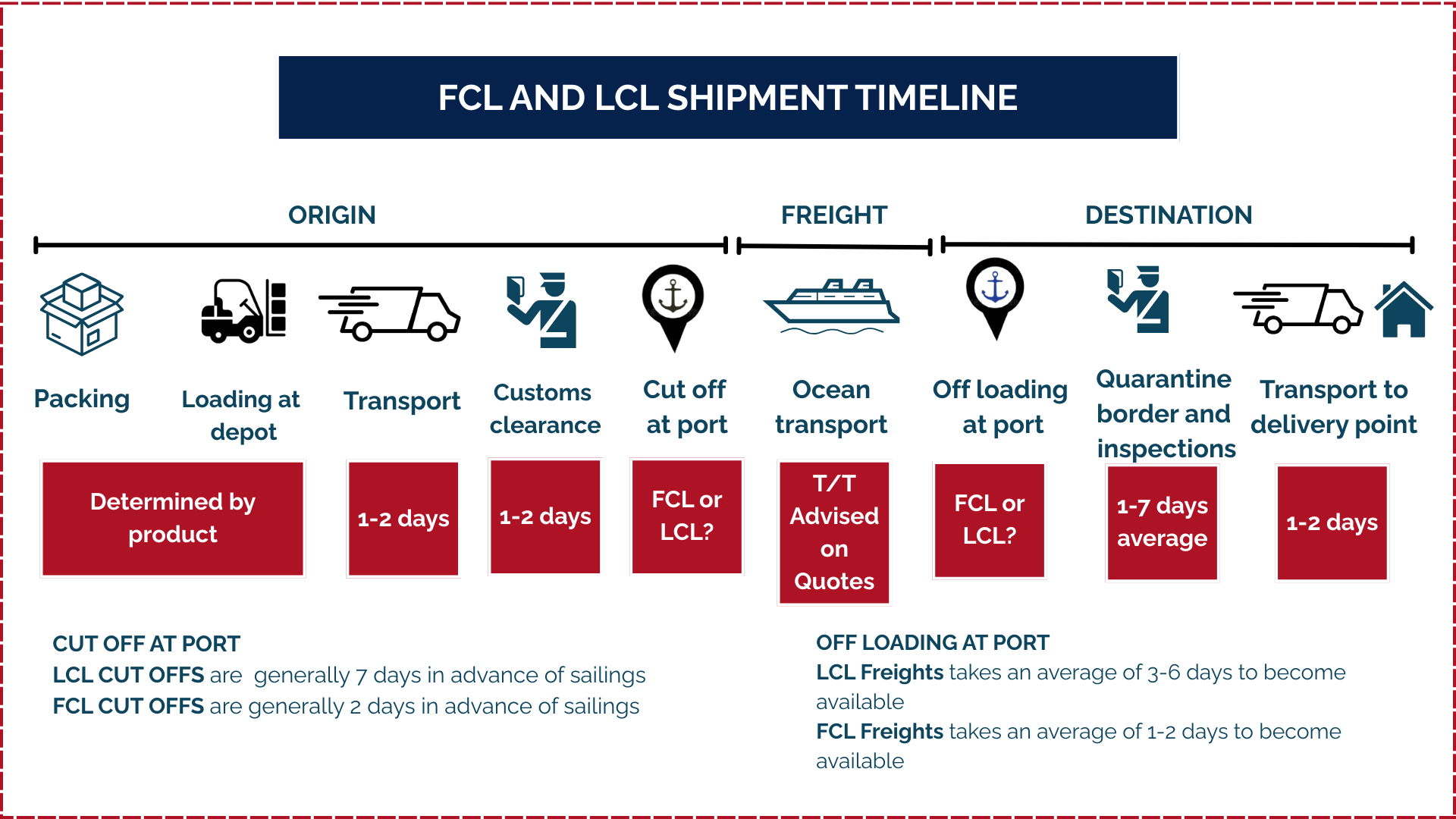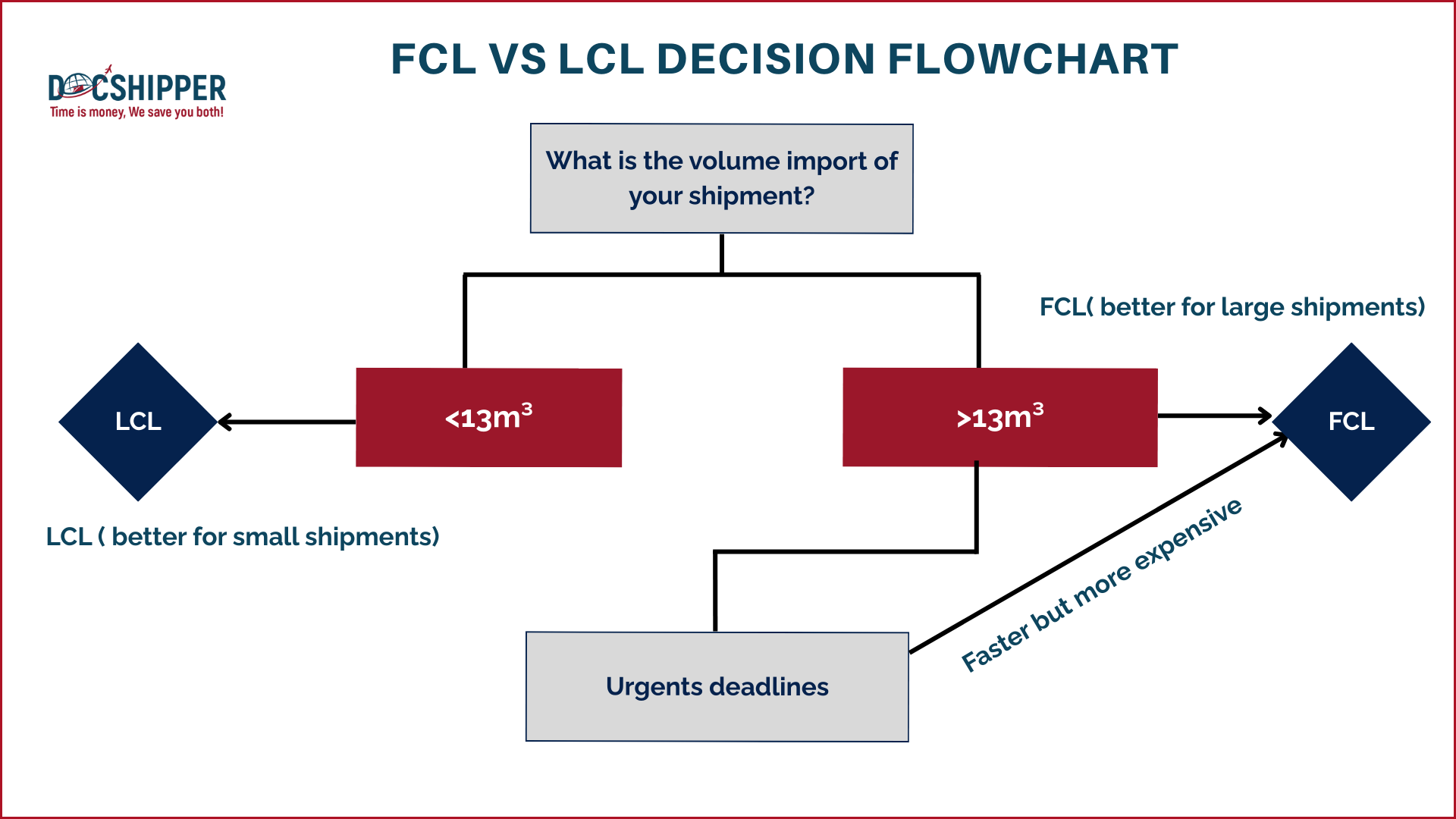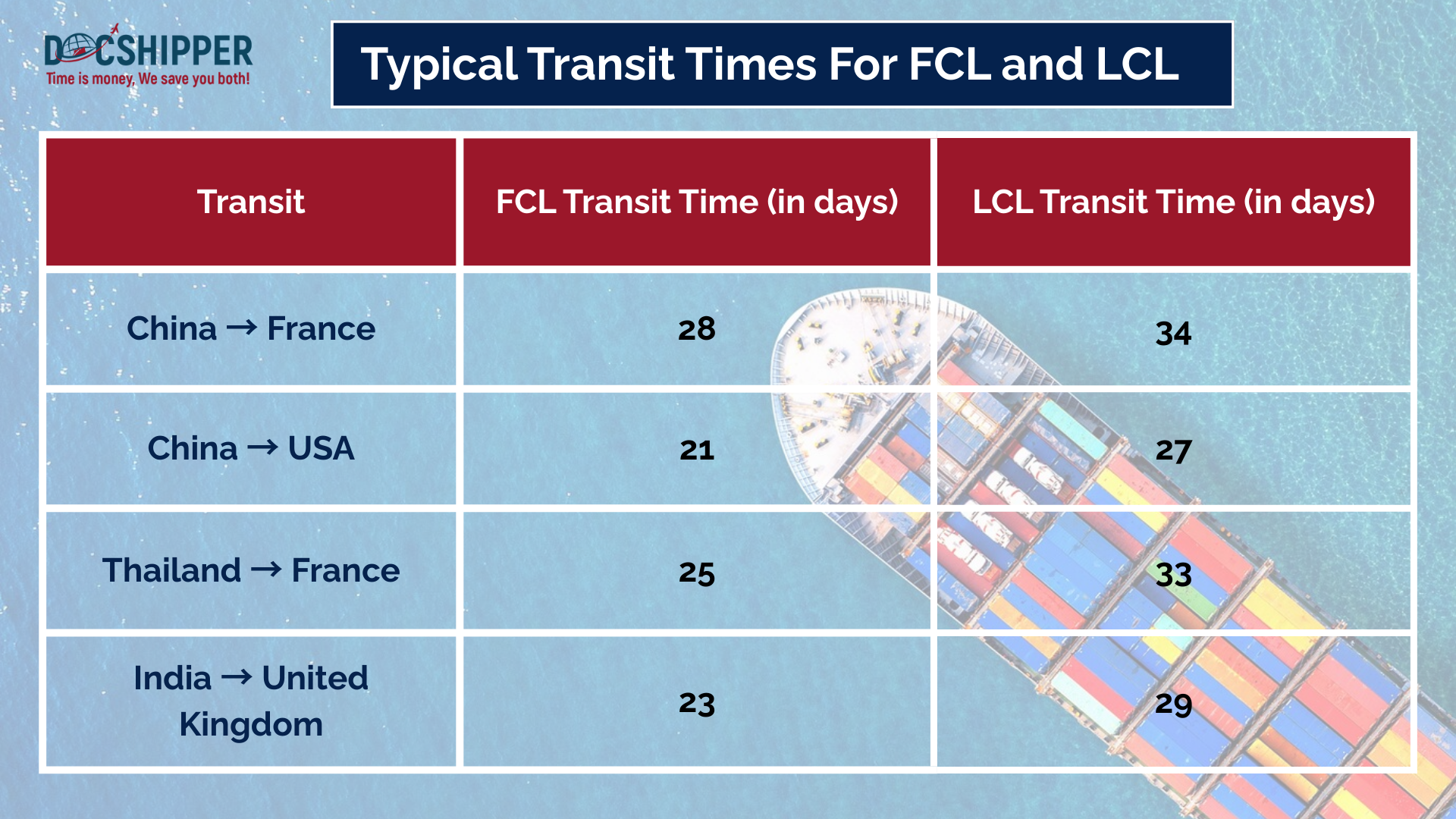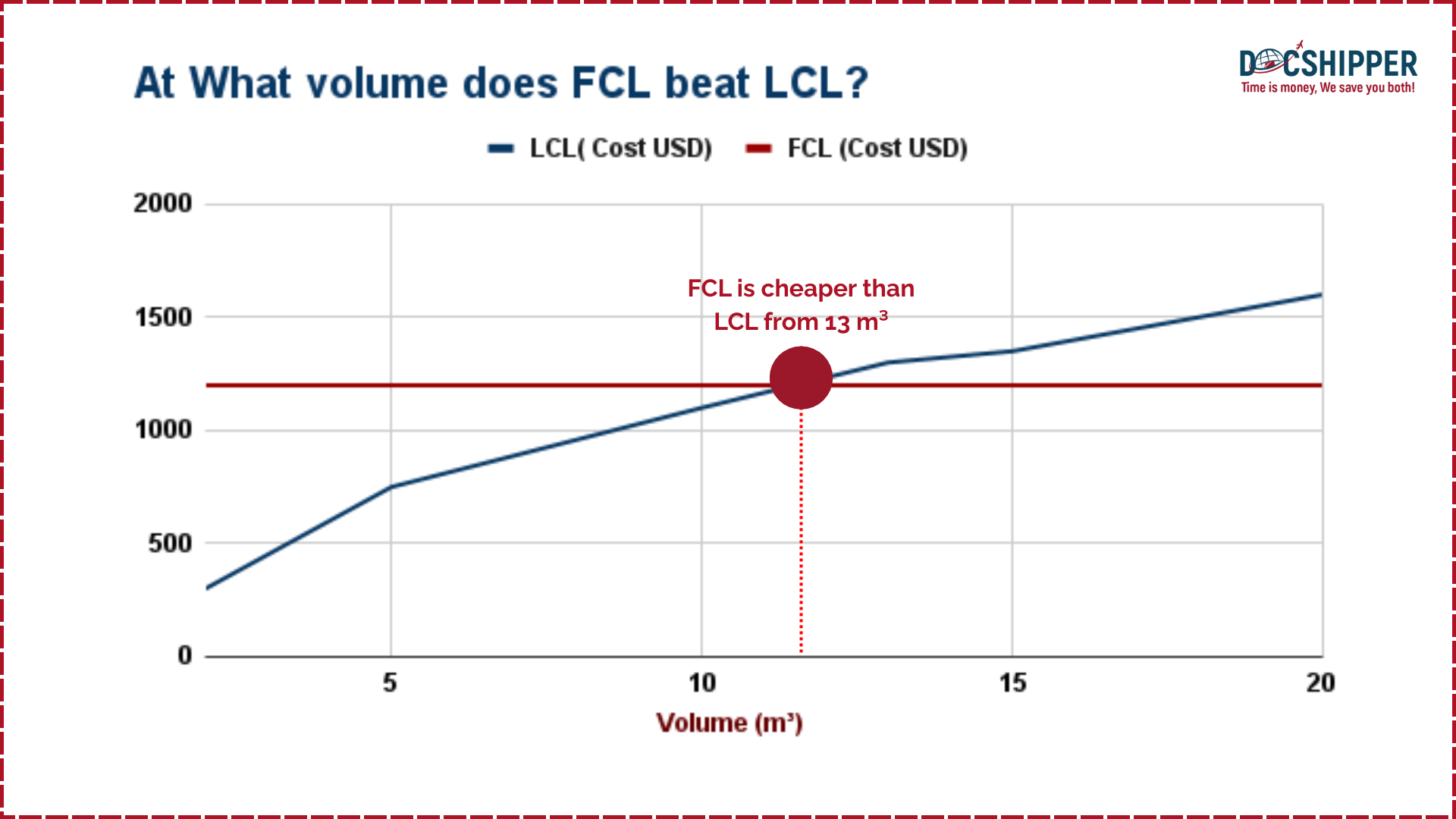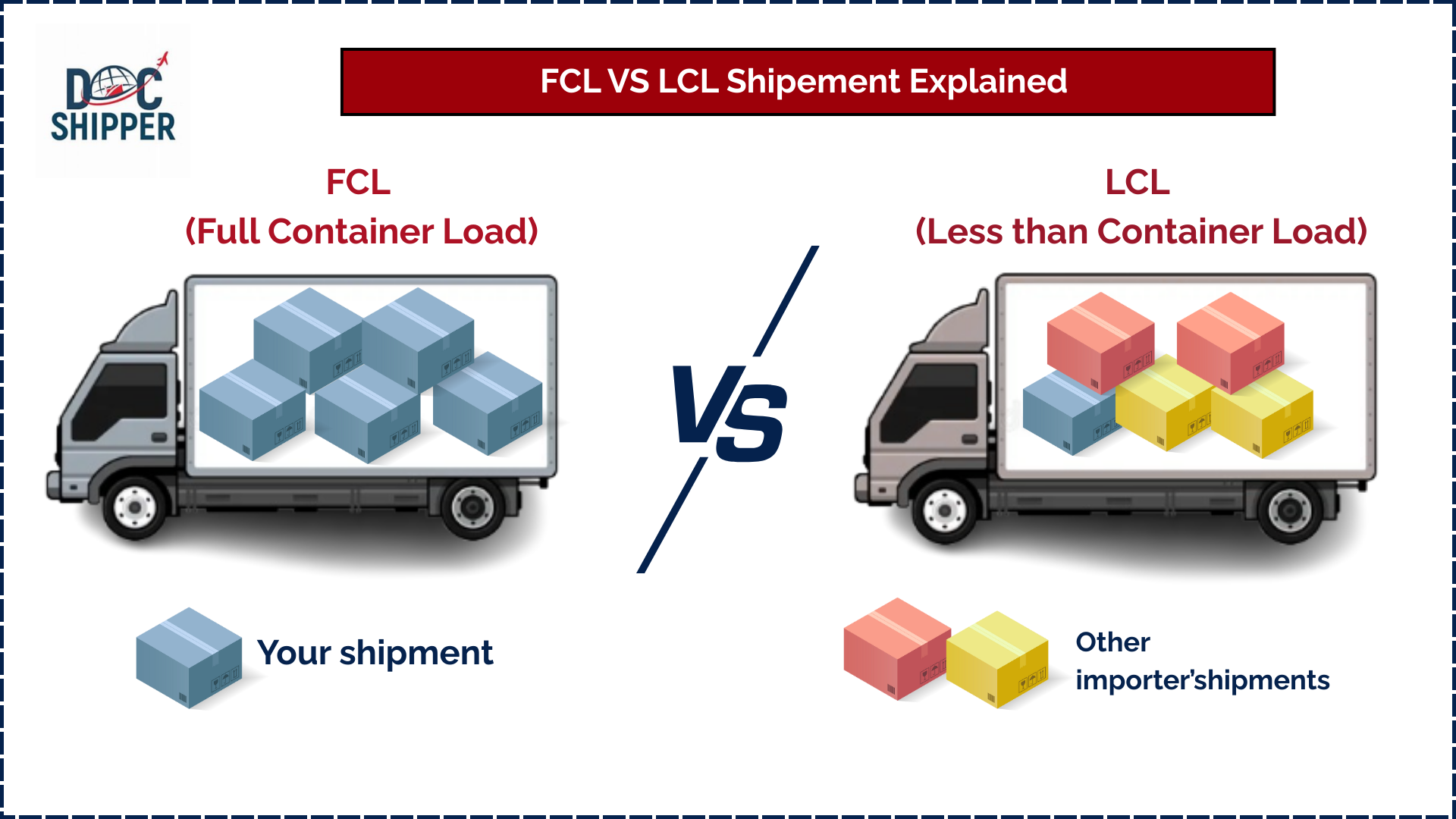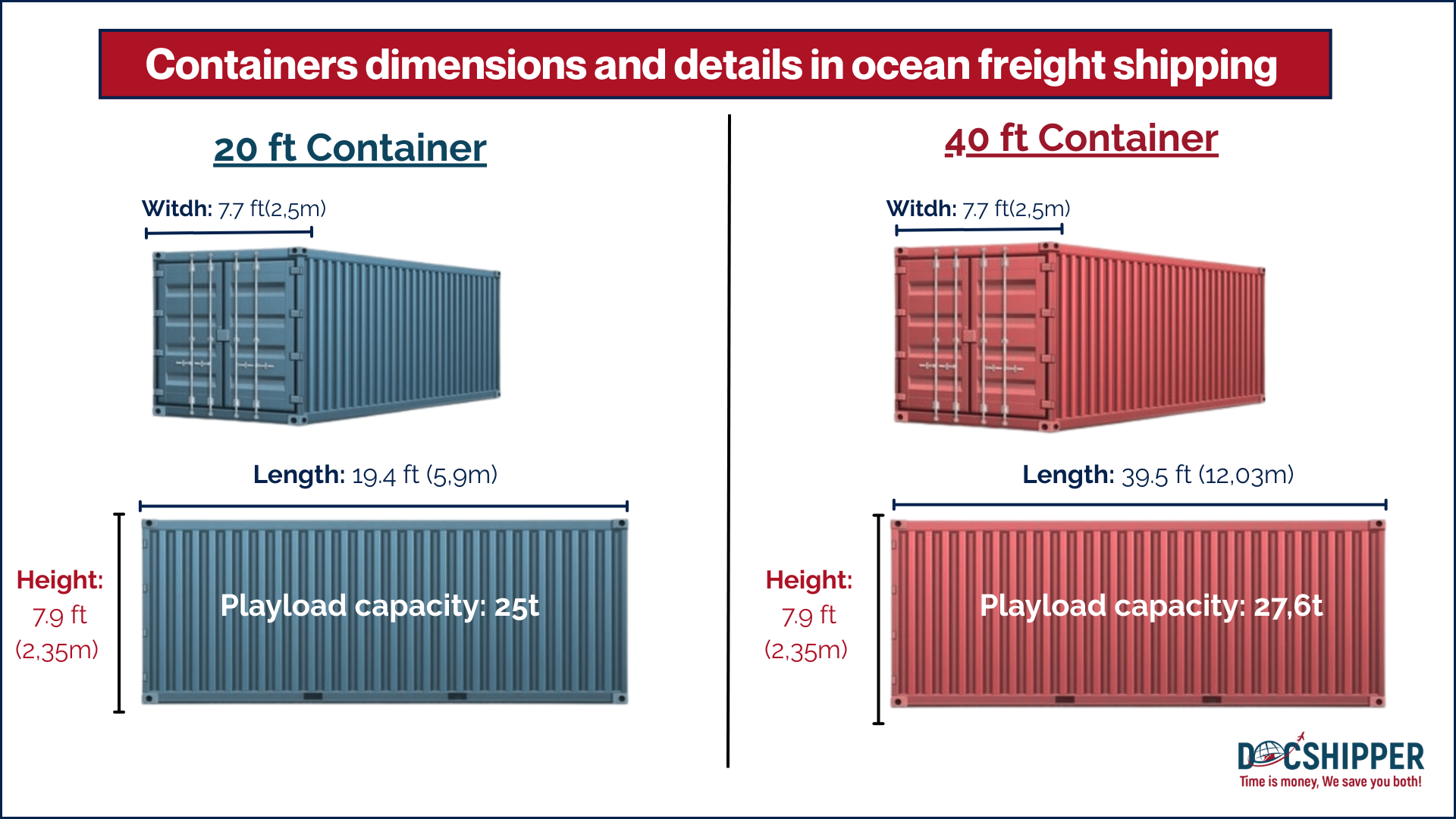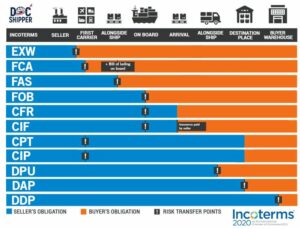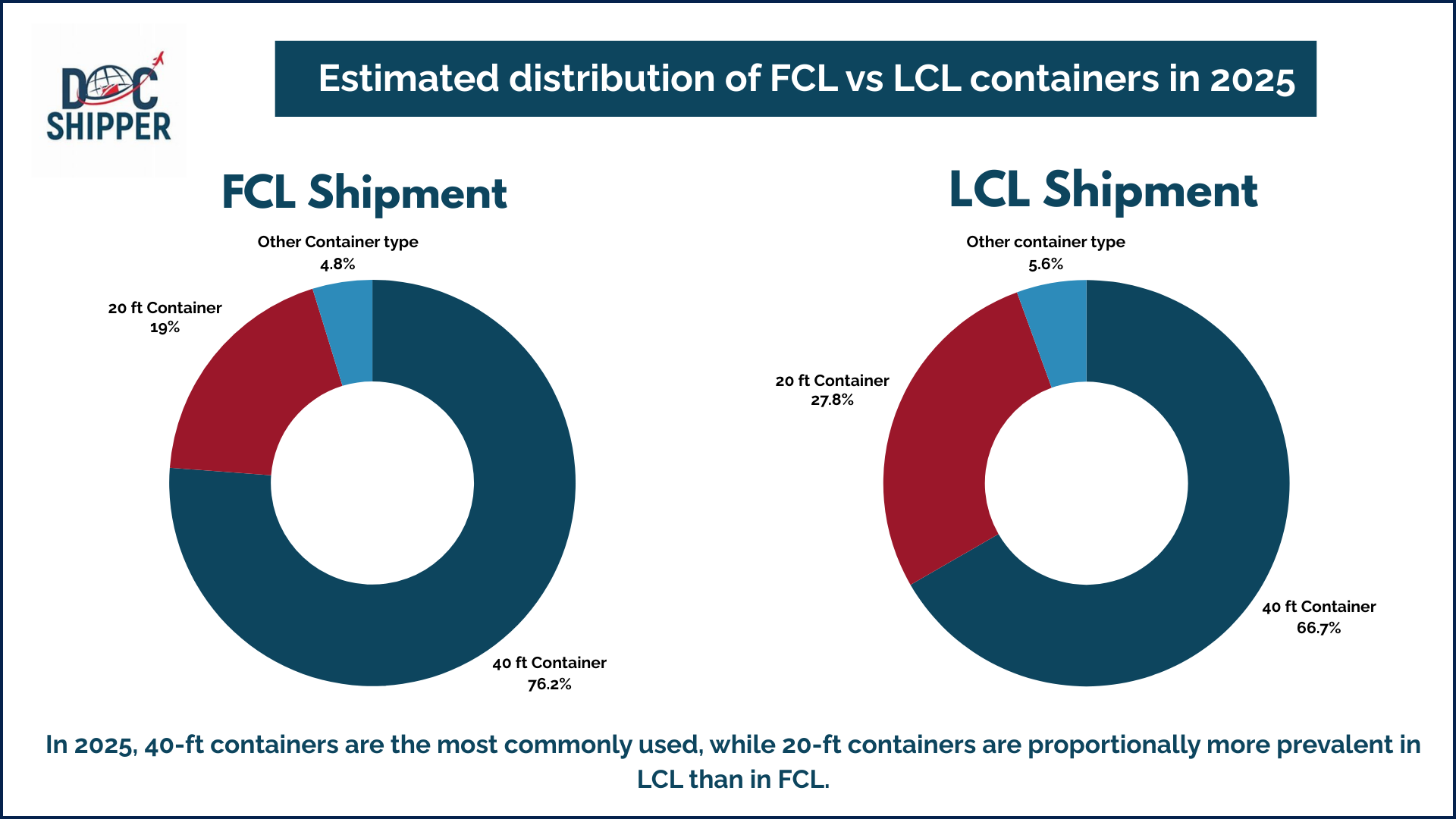Ever dreamed of having an entire container just for your goods during logistics transport? That's exactly what Full Container Load (FCL) offers! Unlike Less than Container Load (LCL), where shipments are shared. Each of them offers advantages in terms of cost, security, and lead times, depending on the size of your shipment and your specific requirements.
In this guide, find out all you need to know about FCL: its features, benefits, and how it compares to LCL to help you choose the best option for your shipments.
Table of Contents
What is FCL? (Full Container Load) Explained
Understanding FCL meaning is essential for businesses that need to ship large volumes of goods.A Full Container Load ensures your cargo is transported securely and efficiently without being mixed with other shipments. This method ensures that goods are not mixed with others in transit.
Definition and Basic Concepts
Full Container Load (FCL) refers to a shipping method where a single shipper uses an entire container to transport his goods. FCL shipping rates are more predictable and often more cost-effective for large shipments, as the shipper is responsible for the entire container. FCL is particularly advantageous for businesses that need to ship large quantities of goods, as it avoids sharing the container with other shipments, ensuring a more efficient process. In 2025, FCL shipments account for approximately 60% to 65% of global ocean freight volume, making it the preferred choice for large-scale shippers.
How FCL Shipping Works
The process begins with the FCL freight booking, where the shipper reserves an entire container based on the volume of the goods. This allows for a tailored solution that suits the specific needs of the shipment. In an FCL shipment, the goods are loaded directly into the container, which is then sealed to ensure the safety of the cargo. Once loaded, the container follows a streamlined FCL delivery process, generally resulting in faster transit times and fewer handling steps. Upon reaching the destination port, the container is unloaded from the vessel and transported to the warehouse or final delivery location.
Key Characteristics of FCL Containers
FCL container dimensions vary depending on the type of container used, with the most common sizes being 20-foot and 40-foot containers. A 20-foot container can typically hold up to 28,000 kg (approximately 28 tonnes) of cargo, while a 40-foot container has a larger capacity, suitable for even bigger shipments. The ability to fully utilize the capacity of the container without sharing it with other shipments is one of the major FCL shipping advantages, as it allows for better control over the shipment's safety, security, and delivery timeline.
What is LCL? (Less than Container Load) Explained
In addition to FCL, there's another method of transport: LCL (Less than Container Load). While FCL is ideal for larger shipments, LCL is designed for smaller shipments.In this section, we'll take a closer look at the definition of LCL, explain how it works, and highlight its main features.
Definition and Basic Concepts
LCL, short for Less than Container Load, refers to a shipping method where cargo from multiple shippers is consolidated into one container. This is ideal for businesses that don’t have enough volume to fill an entire container. Understanding the LCL meaning is essential for optimizing small to mid-sized international shipments. Each shipper pays only for the volume used.In 2025, LCL shipments represent approximately 25% to 30% of global ocean freight volume, making it a strategic choice to reduce logistics costs.
How LCL Shipping Works
In an LCL shipment, your goods are combined with those of other exporters through a process also known as CFS (Container Freight Station). Once the container is full, it is sealed and shipped. Upon arrival, the contents are deconsolidated and each shipment is delivered to its respective consignee. While LCL shipping involves more handling and coordination compared to FCL.
Key Characteristics of LCL Shipments
LCL shipping is ideal for shipments that don’t require a full container. It allows businesses to send smaller volumes—starting from just 1 cubic meter (CBM)—by sharing container space with other shippers. Standard 20-foot and 40-foot containers are commonly used, with capacities of about 33 CBM and 67 CBM. Pricing is typically based on volume or weight. Since LCL shipments are grouped, they undergo consolidation and deconsolidation at destination.
SIAM Shipping info : Sea Freight is ideal for companies looking for a reliable, cost-effective solution for shipping their goods worldwide. Whether you choose FCL or LCL, Siam Shipping ensures that your sea freight is optimally managed. Contact our experts today for personalized advice and to choose the solution best suited to your needs.
FCL vs LCL: Comprehensive Comparison
Before deciding between FCL (Full Container Load) and LCL (Less than Container Load), it’s essential to understand their key differences. In this section, we will compare these two methods in terms of cost, transit time, and security to help you choose the best solution for your needs.
Side-by-Side Comparison Table
This updated table now includes a description of how shipping works for each method, alongside other key differences to help you decide which option is right for you.
| Criteria | FCL (Full Container Load) | LCL (Less than Container Load) |
| Cargo Type | Entire container reserved for one shipper | Cargo shared with other shippers |
| Minimum Volume | Generally starting from 15-20 m³ | Starting from 1 m³ |
| Departure Frequency | More frequent, direct transport | Less frequent, depends on consolidation |
| Transit Time | Faster, less handling involved | Longer due to consolidation and deconsolidation |
| Cost | More expensive for small shipments | Cheaper for smaller shipments |
| Security | More secure, not mixed with other shipments | Potential risk of damage due to handling |
Cost Structure Differences
The main cost difference between FCL (Full Container Load) and LCL (Less than Container Load) lies in the way space is charged for. With FCL, you pay for the entire container, regardless of volume.
For example, if you're importing 1 m³ of electronics, LCL will be more economical, as you only pay for the space occupied. With FCL, on the other hand, you pay for the whole container, which would be more expensive in this case. For example, a 20-foot FCL container costs around $1,500, far more than the LCL rate for a small shipment.
Transit Time Comparison
FCL is generally faster because it avoids consolidation and deconsolidation steps. This means you avoid the delays associated with waiting for other cargoes or handling different shipments, which is one of the FCL shipping advantages. For example, for a 10 m³ FCL cargo, transit will be faster, with a shipment from Thailand to France taking around 25 days. In LCL, the consolidation and unbundling process can add another 5 to 7 days, significantly increasing FCL transit times when compared to less direct shipping methods.
Security and Risk Factors
Goods security varies by transport type. With FCL, the container is exclusively for your goods, offering enhanced FCL cargo security and reducing damage risks. FCL container tracking ensures visibility throughout the journey. In contrast, LCL shares the container with other shipments, increasing handling risks.
For instance, shipping fragile wooden furniture via FCL offers better protection and tracking. FCL container inspection ensures the container's condition, while LCL increases damage risks due to poor packing or multiple handling. Additionally, FCL international routes minimize transit disruptions, improving shipment safety.
SIAM Shipping Alert: Shipping goods can be risky—damages, theft, or loss can occur during transit, especially when using LCL or FCL transport. That's why security should never be overlooked. With Siam Shipping's Freight Insurance, ensure that your shipments are fully protected against any potential risks, giving you peace of mind no matter what type of shipping you choose. Contact us today for more information or to secure the best protection.
When to Choose FCL Shipping
FCL shipping can be the most efficient option depending on the scale of your goods. Understanding when to opt for FCL versus other methods can save time and money. In this section, we’ll explore the specific scenarios where FCL shipping truly shines.
Volume Thresholds for FCL
Choosing FCL shipping is generally the best option when your cargo volume is large enough to fill an entire container. This typically applies when the shipment exceeds approximately 10 to 15 cubic meters, but the exact threshold may vary depending on your specific needs. For larger volumes, FCL can offer better value for money compared to LCL shipping. By opting for FCL, you utilize the entire container space and avoid paying for unused space, as is the case with LCL. Proper FCL shipment preparation ensures the goods are packed and organized for efficient transport. Additionally, FCL container sealing provides security for your cargo, while working with FCL ocean carriers can guarantee smoother transit. Optimizing your FCL capacity utilization ensures cost-effectiveness and minimal wastage of space.
Specific Use Cases for FCL
FCL shipping is particularly suitable for companies that frequently ship large quantities of goods or products that are sensitive to damage. For example, industries such as automotive, electronics, and building materials often use Full Container Load shipping — for instance, when importing a car, heavy machinery, or bulk materials due to the size, weight, and value of the items being shipped. FCL shipping ensures that your goods are handled with minimal risk, as the container is entirely dedicated to your products.
Cost-Benefit Analysis for FCL Shipping
Although FCL shipping may have a higher initial cost compared to LCL shipping, it can be more economical in the long run for larger shipments. One of the biggest advantages of FCL shipping is the ability to reserve an entire container, which allows you to avoid paying for shared space. Additionally, FCL containers are generally less prone to delays, as you don't have to wait for other shipments to be loaded or unloaded. This can result in faster delivery times, which is essential for businesses that rely on quick turnaround times.
When to Choose LCL Shipping
Choosing LCL (Less than Container Load) shipping often depends on the volume and urgency of the goods being shipped. If you don't have enough cargo to fill an entire container, LCL can be a great alternative. Here, we’ll discuss the key factors that make LCL shipping the right option.
Volume Considerations for LCL
LCL shipping is generally the best option for smaller shipments, typically less than 10 cubic meters, that don't require an entire container. For businesses that need to send smaller shipments occasionally, LCL offers the flexibility to ship goods without the commitment of paying for a full container load with FCL. This makes it an excellent option for startups or small businesses with irregular or low-volume shipments.
Specific Use Cases for LCL
LCL shipping is ideal for businesses that don't ship large quantities regularly but need to transport goods internationally. For example, Less than Container Load is commonly used by e-commerce businesses that need to ship small quantities of items from one location to another or by manufacturers that need to ship parts, raw materials, or small finished goods less frequently. It's also a good solution for businesses expanding into new markets where shipment volumes may vary.
Cost-Benefit Analysis for LCL Shipping
LCL shipping can offer a more cost-effective solution for smaller shipments. The savings come from sharing the container with other shipments, allowing you to pay only for the space your goods occupy. This is especially useful if your cargo volume is below the minimum threshold for FCL shipping. However, LCL also has its drawbacks. Since your goods are sharing space with others, this can result in longer delivery times due to multiple handling.
Common Mistakes and Errors to Avoid in FCL Shipping
Understanding the common pitfalls in FCL shipping is essential to avoid delays and unexpected costs. In this section, we'll identify the frequent mistakes that can disrupt your shipping process and how to prevent them. By staying vigilant and anticipating these mistakes, you can avoid additional costs.
Booking the Wrong Size or Type of Container
One of the most common mistakes when booking FCL shipments is choosing the wrong size or type of container. FCL containers come in various sizes (20ft, 40ft, high cube, refrigerated, etc.), and choosing the wrong type can lead to inefficiencies and additional costs. It is essential to correctly assess the size and weight of your cargo and ensure that the container you choose can accommodate it without exceeding weight limits or leaving unused space.
Incorrect Cost and Break-Even Calculations
When considering FCL shipping, it is crucial to calculate the total cost of the shipment, including container rental, FCL customs clearance, and ground transportation. Many companies focus only on the initial cost but forget to account for all associated fees. The FCL loading procedures can influence the overall cost of the shipment, as improper loading may lead to inefficiencies or extra charges. Additionally, it's important to carefully perform FCL cost calculations to include hidden costs, such as customs fees and loading expenses. If your cargo doesn't fill the entire container, opting for FCL may not be as cost-effective as Less-Than-Container Load (LCL), especially if these additional costs are not properly accounted for.
Documentation Errors That Delay FCL Shipments
Documentation errors can cause significant delays in the FCL shipping. Common errors include incorrectly completed or incomplete FCL documentation requirements, such as customs clearance documents. These errors can lead to delays at customs, disrupting the shipping schedule. To avoid such issues, it's essential to follow the correct FCL booking process and ensure all paperwork is accurately prepared. Working with experienced FCL freight forwarders can help ensure that all documentation is properly submitted, which will contribute to smoother shipment management. Especially with FCL logistics, where meeting deadlines is often crucial, proper documentation is key to maintaining an efficient shipping schedule.
Misunderstanding of Container Weight Limits
Each FCL container has specific weight and FCL volume requirements, and exceeding these limits can result in shipment rejection. Heavy goods that exceed the container's weight limit can lead to safety concerns, delays, or increased costs. Proper FCL container stuffing ensures optimal use of space and prevents exceeding weight limits. Understanding these restrictions and utilizing FCL consolidation services effectively is essential to ensure your goods comply with shipping regulations.
Container Types and Specifications for FCL
When it comes to Full Container Load, choosing the right container is essential to ensure your goods are transported safely and efficiently. In this section, we'll detail standard container dimensions, container options, and the criteria to consider when selecting the best container for your cargo.
Standard Container Dimensions and Capacities
Standard containers are the most widely used in FCL shipping, and they come in various sizes to accommodate different shipment volumes. The most common container sizes are 20-foot and 40-foot containers. A standard 20-foot container typically offers a volume of around 33 cubic meters, while a 40-foot container offers about 67 cubic meters of space. These dimensions and capacities are important to know so you can determine if your goods will fit comfortably within the container, maximizing space and minimizing unnecessary shipping costs.
Specialized Container Types
Some goods require specific transport conditions, and that's where specialized containers come in. Here are the most common types of specialized containers:
- Refrigerated containers (Reefer): Used for temperature-sensitive goods, such as food like chocolate, medicine, or chemicals. They maintain a constant temperature throughout transport.
- Open-top containers: Ideal for bulky or irregularly shaped cargo that can't fit in a standard container. The open roof allows for easier loading and unloading.
- Flatbed containers: Designed for heavy or large cargo, such as vehicles or machinery. These containers have no walls or roof, providing unobstructed space for larger items.
How to Select the Right Container Type
Choosing the right container type is key to avoiding issues during shipping. Whether you're booking a container in Thailand or elsewhere, your choice depends on the type of cargo, its volume, and any special needs. For large shipments, FCL (Full Container Load) offers better security and cost-efficiency. Consider the FCL vs LCL decision factors, such as cargo size, cost, and urgency. By assessing your goods—fragility, weight, handling—you can make an informed decision that aligns with your FCL shipping timeline and maximizes FCL capacity utilization. Work with a logistics provider to ensure optimal space and budget use.
To help you make the best decision for your shipping needs, here are different scenarios that illustrate when each option is most beneficial:
1)A textile company based in India ships 10,000 shirts each month to France. Since this volume fills an entire 20 ft container, they opt for FCL (Full Container Load) shipping. This solution allows them to secure their goods, reduce the risk of damage associated with sharing a container with other clients. By using FCL, the company improves logistics efficiency and ensures regular deliveries to its European partners.
2)A young French cosmetics startup wants to ship 50 boxes of products to a distributor in South Korea. Since the volume is too small to fill a container, they choose LCL (Less than Container Load). By sharing a container with other shippers, they only pay for the space they use. This solution allows them to test the foreign market at a lower cost without locking in significant logistics capital.
3)A fruit exporter based in Thailand regularly ships large quantities of fresh mangoes to various European countries. Since each shipment typically fills an entire 40 ft container, they opt for FCL (Full Container Load) to maximize efficiency and ensure that their products are delivered in optimal condition. By using FCL, they reduce the cost per unit and guarantee faster and more reliable delivery times.
SIAM Shipping Advice : Working with a logistics partner is a plus when making the right choice between FCL and LCL. Depending on your specific needs, Siam Shipping can guide you toward the most suitable solution via our logistics service, helping you optimize your costs and guarantee the safety of your goods. Don’t hesitate to contact us to discuss your needs.
Incoterms 2020 for Container Shipping
Understanding Incoterms 2020 is essential for anyone involved in container freight.They define the responsibilities, risks, and costs between the buyer and seller in both FCL (Full Container Load) and LCL (Less than Container Load) shipping.This section outlines the most relevant Incoterms for FCL shipping, how they affect costs, and which terms to use depending on your shipping scenario.
Essential Incoterms for FCL Shipping
Incoterms are a set of globally recognized rules created by the International Chamber of Commerce.They define the responsibilities of buyers and sellers in international trade, including who is in charge of shipping, insurance, and customs clearance, and when the risk transfers from seller to buyer. Certain Incoterm are better suited for FCL full container load arrangements due to the nature of full container usage. Terms like FOB, CFR, and CIF are commonly used and allow clarity on responsibility transfer and freight handling.
How Incoterms Affect Container Shipping Costs
The choice of Incoterm directly impacts various aspects of your FCL logistics. Here’s how it can affect your container shipping costs:
- Freight charges: Depending on the Incoterm, either the buyer or seller will cover transportation costs to the port of destination or even to the final delivery point.
- Insurance: Some terms (like CIF) require the seller to provide insurance, while others (like FOB) place this responsibility on the buyer.
- Delivery responsibilities: The Incoterms define who arranges and pays for each segment of the FCL shipment, including loading, main carriage, unloading, and inland transport.
- Customs duties and clearance: The Incoterm chosen also determines which party is responsible for export and import formalities and associated costs.
- Risk transfer: Understanding when the risk transfers from seller to buyer helps avoid costly misunderstandings or disputes during the FCL shipping process.
Recommended Incoterms for Different Shipping Scenarios
Selecting the right Incoterm based on your shipping scenario ensures smooth coordination, reduced risk, and optimized cost control throughout your FCL shipping process.
- Choose FOB (Free On Board) or EXW (Ex Works) if you want greater control over the shipping process. These terms are ideal when you have established partnerships with freight forwarders or want to negotiate your own transport costs. With EXW, you manage the shipment from the seller’s premises, while FOB transfers responsibility at the port of origin.
- On the other hand, if you’re seeking a more hands-off approach, CIF (Cost, Insurance and Freight) or DAP (Delivered at Place) are better suited. These Incoterms shift most of the logistical responsibility to the seller, making them ideal for businesses without internal logistics expertise or those prioritizing convenience.
- For a more balanced option, consider CFR (Cost and Freight). It allows the seller to handle the main transport leg up to the destination port while the buyer takes charge of insurance and final delivery. This setup offers cost visibility and flexibility at the receiving end.
SIAM Shipping Tip: To choose the right Incoterm, first assess who will be responsible for transport, insurance, and customs fees at each stage of the journey. To help you navigate through the different options, refer to our comprehensive guide on Incoterms 2020. Siam Shipping is here to assist you in making the best decision, so contact us today for expert guidance.
Practical Guide to Managing FCL Shipments
Shipping via FCL container requires coordination across multiple steps, from documentation to delivery. A clear understanding of the process helps prevent delays and reduces costs in full container load shipping.This section will walk you through the key aspects of managing your FCL shipment from start to finish.
Official customs websites, such as US customs clearance or China customs clearance, generally provide detailed information on how the different Incoterm work and as well as import and export regulations.
Documentation Requirements
Accurate documentation is crucial for smooth FCL shipments. These documents are essential to avoid delays or customs issues. The following are the essential documents:
- Bill of Lading (B/L): Contract of carriage and goods receipt.
- Commercial Invoice: Details the goods and their value and is required for customs clearance.
- Packing List: List of packages with quantities, weights, and dimensions.
- Customs Documents: Declarations and certificates required for export and import, depending on the destination.
- Additional documents for specific goods like dangerous goods or food.
Tracking and Visibility Options
Visibility in cargo container shipping is crucial for supply chain efficiency. With FCL delivery, tracking your container in real time is essential to ensure timely arrival. Using freight forwarder platforms and digital tools allows you to easily monitor FCL logistics, providing full transparency throughout the journey. By staying updated, you can better manage your FCL vs LCL decisions and avoid unexpected delays in your shipments.
Common Challenges and Solutions
From port delays to customs issues, full container load (FCL) shipments can face several hurdles that may disrupt the efficiency of your supply chain. These challenges often arise due to various factors, such as weather conditions, congestion at busy ports, or paperwork delays. While FCL shipments offer the advantage of exclusive use of the container, they also come with their own set of risks, such as incorrect container sizing, miscalculations of cargo weight, and errors in shipping documentation. On the other hand, less-than-container load (LCL) shipments may experience delays due to the time required for cargo consolidation or the risk of damage from shared container space.
Conclusion
Choosing between FCL and LCL is a strategic decision based on volume, budget, and timeline. FCL offers faster transit, fewer handling risks, and better control, making it ideal for large shipments. LCL, while more economical for smaller loads, may involve delays and a higher risk of damage. For tailored advice and seamless logistics, consult with experts like Siam Shipping, who provide end-to-end support and ensure your shipments stay on track
FAQ | What is FCL? Complete Guide to Full Container Load [2025]
How do I calculate costs for FCL vs LCL?
FCL pricing is generally based on a flat container rate, such as 20ft FCL or 40ft FCL, while LCL is calculated per CBM (cubic meter). For large volumes, FCL is often more economical, offering better value for money compared to LCL.
What are the minimum requirements for FCL shipping?
FCL is ideal when you have enough cargo to fill at least 75-80% of a container, whether it's a 20ft FCL, 40ft FCL, or even a high cube FCL container. This ensures exclusive use of the container for one shipper.
What are the common challenges with FCL and LCL, and how can I avoid them?
With FCL shipping, common challenges include booking the wrong container size, weight miscalculations, or documentation errors. Meanwhile, LCL shipments face risks like delays due to consolidation or potential damage from shared loads. Working with FCL freight forwarders helps mitigate these risks, particularly when opting for door-to-door FCL services.
What are the typical timeline differences between FCL and LCL shipments?
FCL transport is generally faster due to direct handling and no need for consolidation. LCL can take longer due to extra steps like deconsolidation at destination ports.
What are the benefits of using FCL over LCL for large shipments?
FCL offers faster transit times, reduce risk of damage from shared loads making it the preferred option for large shipments.Additionally, robust FCL logistics ensure efficient tracking of the shipment. FCL cargo remains secure and isolated from potential risks associated with shared containers.
How does FCL ocean freight compare to other shipping solutions for international trade?
FCL ocean freight ( or FCL sea freight) offers a reliable and cost-effective method for transporting entire containers across global routes. This service reduces handling risks and ensures that your shipment maintains its integrity.
SIAM Shipping info: Do you like our article today? For your business interest, you may like the following useful articles :
SIAM Shipping Advise : We help you with the entire sourcing process so don't hesitate to contact us if you have any questions!
- Having trouble finding the appropriate product? Enjoy our sourcing services, we directly find the right suppliers for you!
- You don't trust your supplier? Ask our experts to do quality control to guarantee the condition of your goods!
- Do you need help with the logistics? Our international freight department supports you with door to door services!
SIAM Shipping | Procurement - Quality control - Logistics
Alibaba, Dhgate, made-in-china... Many know of websites to get supplies in Asia, but how many have come across a scam ?! It is very risky to pay an Asian supplier halfway around the world based only on promises! DocShipper offers you complete procurement services integrating logistics needs: purchasing, quality control, customization, licensing, transport...
Communication is important, which is why we strive to discuss in the most suitable way for you!
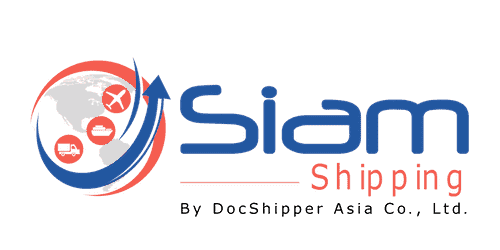
![What is FCL Complete Guide to Full Container Load Shipping [2025]](https://siam-shipping.com/wp-content/uploads/2025/04/What-is-FCL-Complete-Guide-to-Full-Container-Load-Shipping-2025.jpg)
